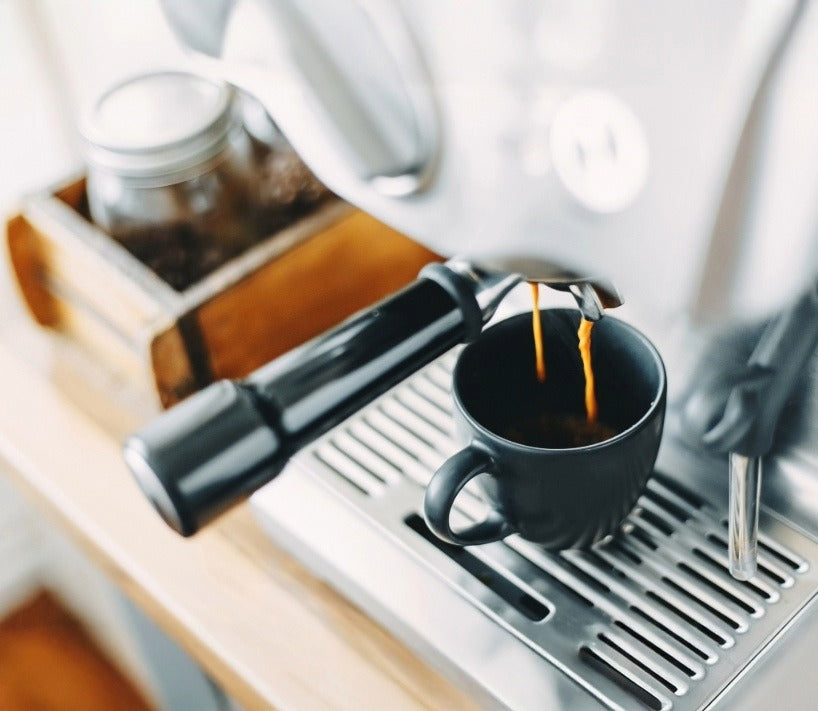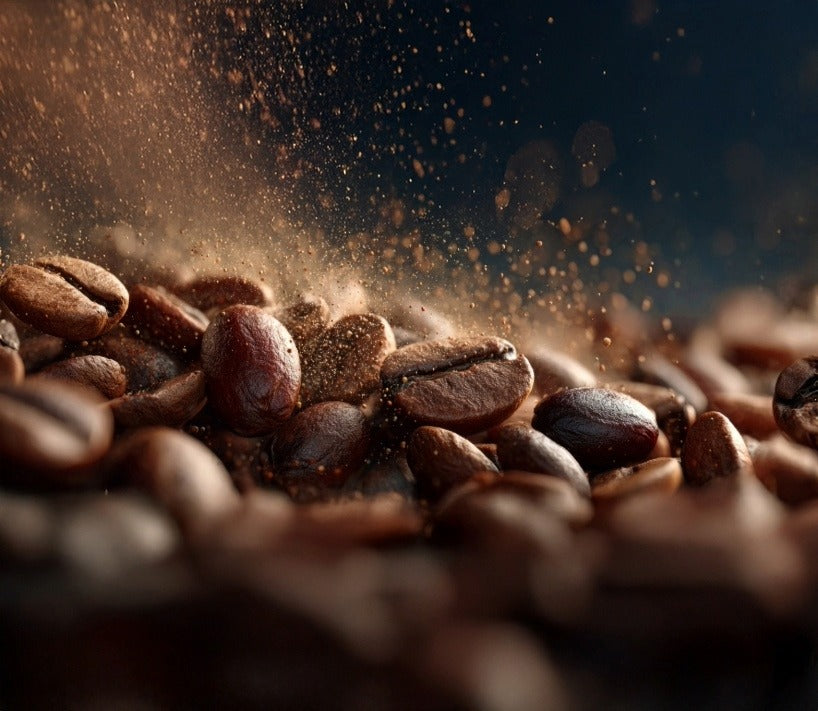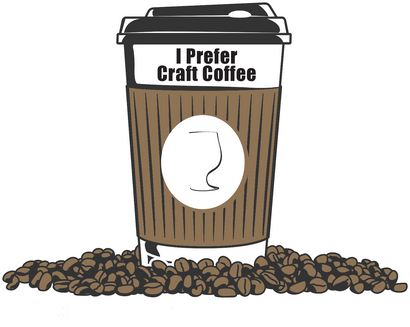Why Prices For The Best Craft Coffee Online Are Increasing?
March 27, 2025 9 min read
ROASTING REALITY: WHY COFFEE PRICES ARE GOING UP (AND WHAT I’M DOING INSTEAD)
I have a confession to make: whenever I hear that coffee prices might skyrocket, my heart does a little jitterbug—kind of like that moment your coffee machine starts making weird noises, and you know you’re in for an adventure. If you’re anything like me, coffee isn’t just a morning pick-me-up; it’s more like a daily ritual that keeps everything in balance. So, the idea of paying even more for my favorite beans has me sweating bullets (although that could be the third espresso talking).
Lately, there’s been a lot of buzz in the coffee community about green—or raw—commercial coffee bean costs shooting through the roof. If you’ve been wondering whether your go-to roasters are about to raise prices, the short answer is: yeah, most likely. I mean, how else can they keep the lights on when the beans themselves cost a fortune? We all need to make a living, after all. But here’s where my little coffee operation stands out: I don’t plan on hiking my prices anytime soon. Instead, I’m taking a different approach—one that involves shrinking our bag sizes from 12 ounces to 10 ounces. Why would I do that, you ask? Stick with me, and I’ll explain everything, from the behind-the-scenes of rising bean costs to my somewhat unorthodox solution.
1. The Big Picture: Why Are Green Coffee Prices Rising So Fast?
Let’s start with the elephant in the coffee shop. You’ve probably read those headlines: “Climate Change Devastates Coffee Crops,” “Global Shipping Costs Skyrocket,” or even “Coffee Bean Shortages Loom.” Guess what? It’s all connected. Green coffee is an agricultural product, and it’s at the mercy of weather patterns, farming methods, political upheavals, shipping logistics, and consumer demand. If one of these factors goes haywire, it has a ripple effect on the entire coffee chain.
-
Climate Chaos: Frosts in Brazil, droughts in Central America, and storms in Southeast Asia can annihilate coffee crops overnight. Specialty coffee near me used to be easier to find, but now farmers are struggling to meet global demand because extreme weather is decimating harvest yields.
-
Shipping Struggles: I don’t know if you remember that time a giant ship got stuck in the Suez Canal, but that was a spectacular reminder that the supply chain is fragile. Even minor setbacks—port congestion, cargo container shortages, labor strikes—can send shipping costs through the roof. And who pays for that in the end? We do, whether we’re just looking for the best coffee to buy online or we’re roasters sourcing beans from the other side of the world.
-
Quality vs. Quantity: With more people on the hunt for better coffee experiences—like top coffee delivered to their door, or the best small batch coffee to impress their dinner guests—demand for premium beans has soared. But high-quality beans make up only a fraction of global coffee production. When there’s more competition for the same small pool of top-tier beans, prices inevitably climb.
Put it all together, and you’ve got a recipe for pricey green coffee. If you’ve been scouring the web for where to buy gourmet coffee, or you’re thinking, “Hmm, where can I buy fresh coffee beans near me,” you might have noticed that costs have inched upward across the board. When your local roaster starts crunching the numbers, it’s easy to see why they might tack a few extra bucks onto the bag.
2. But Isn’t Specialty Coffee Always Expensive?
Yes and no. Specialty coffee—often the kind you see when you buy specialty coffee online—commands a premium because it’s sourced from carefully cultivated farms, often in micro-lots, and undergoes rigorous processes to ensure superior taste. Whether it’s the best coffee worldwide or just the best craft coffee at home for a lazy Sunday morning, these beans usually have distinctive flavor profiles, scoring high on the coffee-tasting scale. This means farmers, importers, and roasters all pay extra attention to detail (and invest a lot of cash to maintain quality).
What’s changed in recent times is the sheer rate at which these costs are rising. Some roasters might be feeling the pinch so much that they have no choice but to raise their bag prices if they want to survive. If you’ve been reading about the best coffee for non coffee drinkers or trying to find that perfect gift for coffee lover friends, you might have seen disclaimers like, “Due to increased green coffee costs, our prices have changed.” That’s not just marketing fluff; it’s often the harsh reality of running a small business in the turbulent coffee market.
3. So, Why Am I Not Raising Prices?
Let me be real with you: I thought about raising prices. I really did. When you see the bill for green beans, shipping, packaging, and overhead balloon faster than you can say “espresso,” it’s only natural to consider passing those extra costs onto the consumer. But I decided on a different route—shrinking the bag size from 12 ounces to 10 ounces. Here’s my reasoning:
-
Freshness Factor: One of the biggest concerns I hear from loyal coffee fans is the dread of stale beans. No one wants a bag that’s been sitting around for months, losing its charm and complexity. By reducing the bag size, people are encouraged (and likely) to use the beans up faster, which means they’ll consistently enjoy fresh craft coffee with each brew.
-
Meeting in the Middle: People are used to paying a certain price point for good coffee to drink black. If I keep the price the same but slightly reduce the quantity, it’s a way to keep your monthly coffee budget in check while also protecting my bottom line. It’s like a compromise that says, “I hear you—I’m not trying to squeeze more money out of you, but I do need to keep this business sustainable.”
-
Practical Realities: Let’s face it: you’re either going to raise prices or adjust packaging. If you’re an avid coffee drinker, you might prefer a smaller bag that stays fresh rather than a bigger bag that costs more (and risks going stale). That’s exactly why I think this is a win-win solution.
4. What This Means for You (the Coffee Drinker)
-
No Sticker Shock: Next time you go to order coffee online from me, you won’t see a sudden 20% price hike that makes your jaw drop. Instead, you’ll notice that the bag is 10 ounces instead of 12. The cost? Relatively stable.
-
Better Freshness: Because you’re dealing with fewer beans in a bag, you’ll likely go through them faster, which means less time for oxygen to degrade all those yummy notes you expect from the best tasting whole bean coffee. It’s a small tweak that can genuinely enhance your coffee routine.
-
Fewer Wasted Beans: Ever buy a giant bag only to forget it in the pantry for a couple of weeks? Me too. With a smaller bag, you’re less likely to waste any beans, especially if you’re the type who appreciates rotating different origins and roast profiles. Maybe you like trying a new origin each month or exploring the best specialty coffee online. With smaller bags, the commitment is less daunting.
5. Will Other Roasters Follow Suit?
I can’t speak for every roaster out there, but I do see a few likely scenarios:
-
Straight-Up Price Hikes: Many roasters will look at their spreadsheets and decide it’s simpler to raise the price of that 12-ounce bag by a dollar or two. Consumers might grumble at first, but if the roaster’s reputation is strong, they’ll probably go along with it.
-
Package Size Adjustments: Some roasters, like me, might opt to reduce the size of their offerings. Maybe they’ll go from 16 ounces to 14, or from 12 to 10, or from 250 grams to 200 grams (for those who roll with metric). It’s a way to subtly manage costs without scaring customers off with a huge sticker price.
-
Hybrid Approaches: Some might do a bit of both—raise the price a little and reduce the bag size a touch. Others might change their product lineup entirely, focusing on limited editions or subscription models.
-
No Changes (But Probably Suffering): A small minority might hold tight and do absolutely nothing in hopes that prices will stabilize. But unless they have substantial margins or a philanthropic mission, they’ll likely feel the crunch eventually. This business can be brutal, and not everyone can absorb the loss of rising green coffee costs indefinitely.
6. How You Can Keep Enjoying Great Coffee in Turbulent Times
Despite all the talk of rising prices and downsizing bags, there’s good news if you’re a die-hard coffee lover. The industry is full of passionate people committed to quality, sustainability, and innovation. Here are a few tips for navigating this new normal:
-
Explore Different Origins and Roasters: Don’t be afraid to branch out. Whether you want the best coffee to buy online or you’re checking out the best coffee on the internet for unique flavor notes, variety can be exciting. Different roasters might have relationships with farmers in less-affected regions, enabling them to keep costs stable.
-
Sign Up for Subscription Services: Some roasters offer subscriptions at a locked-in rate, which can shield you from sudden price hikes. You’ll also get the convenience of having the best craft coffee at home without having to constantly reorder.
-
Shop Local When Possible: If you’re thinking, “Where can I buy fresh coffee beans near me?” check out local roasters. Yes, some are feeling the pinch, but local roasters often have more agile supply chains. It’s worth seeing if they have deals or promotions, especially for loyal, repeat customers.
-
Buy in Smaller Quantities: If you’ve typically gone for a massive haul of beans (like a few pounds at a time), consider scaling back to smaller amounts more frequently. This ensures you get fresh coffee consistently and minimizes the risk of price shocks on big orders.
-
Get Resourceful: For those times when your budget is tight, you can experiment with blending fresh specialty beans with a more budget-friendly variety. Or you can adjust your brewing methods to extract maximum flavor from fewer grounds. AeroPress, for instance, can be a total game-changer in terms of coffee-to-water ratio.
-
Ask Questions: Whether you’re searching for good coffee to drink black or the best coffee worldwide, don’t hesitate to reach out to your roaster. Ask about roast dates, sourcing, bag sizes, and how they’re handling the green coffee price surge. Most roasters are more than happy to share insights with curious customers.
7. Addressing the “Gift Factor”
Coffee is one of those timeless presents for coffee lovers, right? If you’re planning to give coffee beans as a gift during the holidays or for someone’s birthday, you might notice changes in how roasters package their beans. Maybe you’ve always given a 12-ounce bag of the best specialty coffee online to a buddy every year. Don’t be surprised if your roaster now offers only 10-ounce bags. The good news is that it’s still an excellent gift for coffee lover friends, just in a slightly smaller format. The flavor will be as rich as ever—if not more so—because of the improved freshness strategy.
So, we’ve covered everything from why green coffee prices are soaring to what I’m doing about it (spoiler alert: shrinking my bag sizes). Here’s the reward for sticking with me through the nitty-gritty details: knowledge is power. Now you won’t be blindsided when your favorite roaster announces a price hike or a bag size reduction. You’ll understand that it’s not some evil scheme—it’s just the economic reality of a supply chain under pressure.
And the best part? By switching to smaller bags, I’m hoping to strike a balance between staying afloat financially and keeping you happily caffeinated without having to break open your piggy bank. The next time you go to order coffee online, you’ll see that the bag might be a bit lighter, but the price is about the same, and the coffee is as fresh as ever. In fact, it’s arguably fresher, because you’ll likely go through it quickly, ensuring each cup bursts with the rich, nuanced flavors we all love. No stale beans in sight!
If there’s one takeaway from all this, it’s that the coffee world is dynamic. Economic shifts, climate patterns, and evolving consumer tastes keep us on our toes. As a roaster, I’m constantly adjusting to these challenges, and my number one priority is to make sure you still have access to the best small batch coffee—or whatever brew fits your taste—without feeling like you need to take out a second mortgage. Smaller bags might not be the perfect solution for everyone, but it’s a strategy that maintains that sweet spot of quality, price, and freshness.
Thank you for taking this journey with me through the ups and downs of coffee pricing. I hope you feel more informed, more empowered, and maybe even a bit more appreciative of how that beautiful bean ends up in your cup each morning. Whether you’re a fan of the best coffee for non coffee drinkers (gotta get those newbies hooked!), searching for the best tasting whole bean coffee to impress your palate, or just plain obsessed with discovering where to buy gourmet coffee at the best value—remember, we’re all in this caffeinated roller coaster together. Stay curious, stay caffeinated, and, most importantly, stay fresh, my coffee-loving friends!
Also in Best Coffee To Buy Online Education

Best Coffee For Espresso at Home For Coffee Lovers
November 29, 2025 4 min read
Best tasting espresso at home starts with the right roast profile for you! Follow this guide and you’ll pull richer shots, sweeter crema, and espresso that actually tastes like espresso… not burnt marshmallows.

Best Fresh Roasted Coffee Delivery Online
November 28, 2025 4 min read
I roast the best tasting coffee at home for you! I use 100% electric equipment, so no hydrocarbons here. Best fresh roasted coffee delivery starts with high-scoring specialty coffee online.

Which Roaster Makes Better Coffee: Gas or Electric?
November 27, 2025 4 min read
Why electric drum roasters produce cleaner, sweeter, more consistent coffee—especially the kind you want when buying fresh roasted coffee beans online or trying to make the best tasting craft coffee at home.
